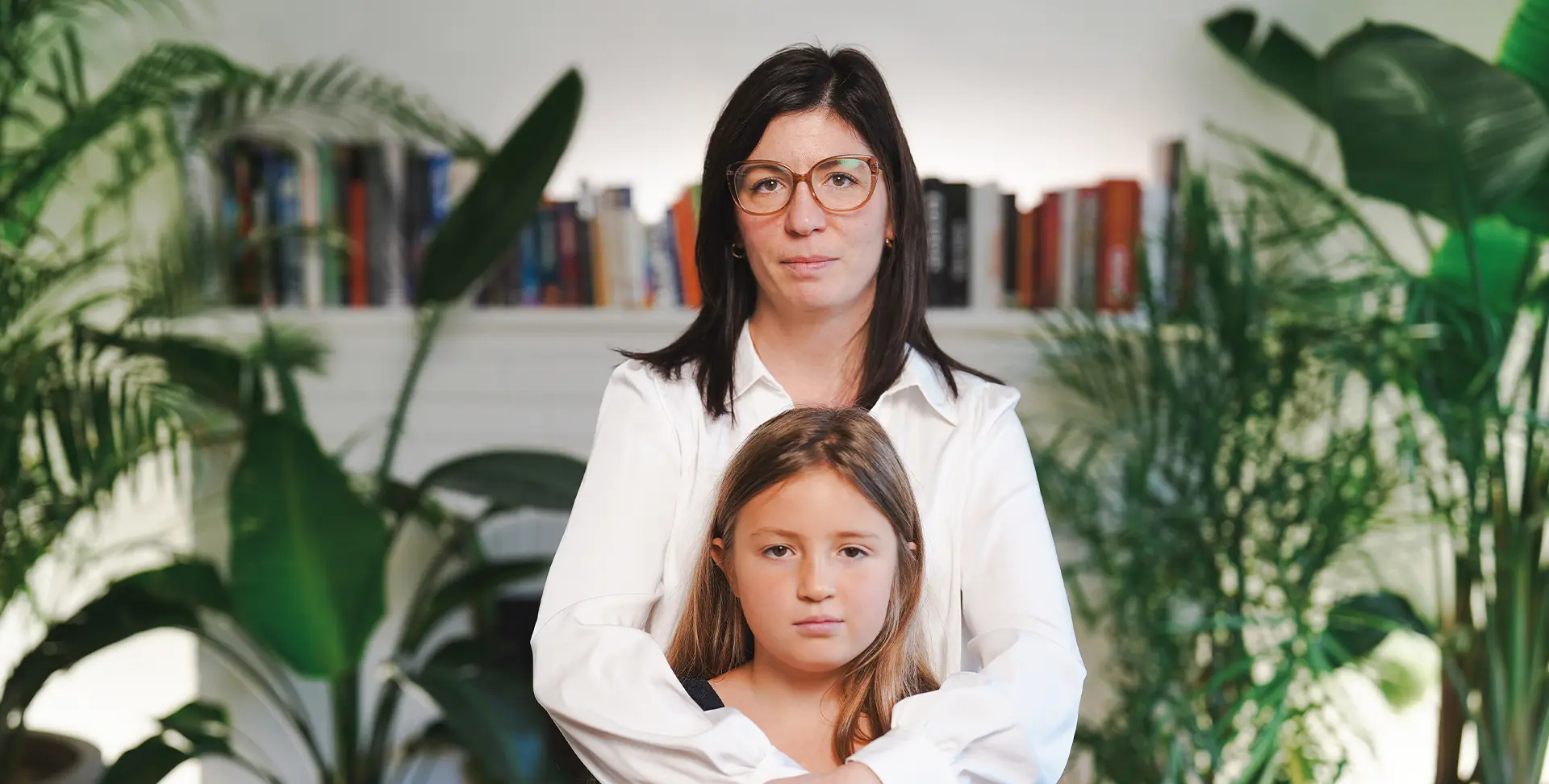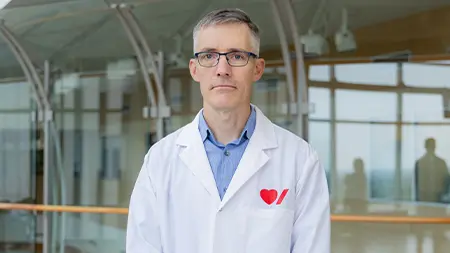
Witness to a revolution
Repeated close calls with his heart gave John Wheatcroft a front-row seat to decades of innovation in cardiac care
Chapter 1 The size of a silver dollar
John Wheatcroft will never forget what he overheard during an angiogram. As doctors looked at an image of his heart, one cardiologist turned to a colleague and said, “I’ve never seen a hole that big in a man's heart that was still alive.”
John was 29. He knew there was a murmur in his heart, but it had never caused him much worry. He had grown up to be a pretty good hockey player, although he tired easily. After high school, he started work in the printing business, then took a job on the oil rigs in northern Alberta. It was heavy labour, tossing 30- and 40-pound bags of cement.
When John came home to Edmonton ill and exhausted, his wife, Faye, took him to emergency. That’s when they learned he had been born with a hole between two chambers of his heart. The doctors said it was the size of a silver dollar.
“I should have been dead,” John says. “How was I alive?”
The news made John and Faye worry that their son, Duane, then aged four, might have the same congenital heart condition. Sure enough, tests showed a hole in Duane’s heart. Both father and son would need open-heart surgery.
That was 1976. For John and his family, it was the beginning of a decades-long journey to keep his heart going strong.
Chapter 2 Father-son surgery
For John, seeing his little boy through heart surgery was harder than facing it himself. But soon both operations were done. While Duane bounced back quickly, John recalls a tough two weeks recovering in hospital.
“I remember tubes down the throat and the breathing machines,” he says. “When I finally got out of the ICU, twice a day a physiotherapist would slap my back to loosen things, and I had to try to cough. That was the most painful thing.”
The discomfort was well worth it, John says. “The surgery was absolutely life-changing. We could make plans and I didn’t worry about being too tired to do them.” He and Faye started playing slow-pitch and kept busy with their family, which now included daughter, Shannon Marie. (She was born with a healthy heart.)
John’s heart worked well for 13 years, then suddenly, it began having erratic rhythms. The cause was scar tissue from the operation, interfering with his heart’s electrical impulses.
The solution was a pacemaker. John got his first in 1989 — a chunky box implanted under the skin on his chest with wires into the heart muscle to control the rhythm. “It was set at 70 beats per minute, no speeding up, no slowing down,” John says. Any exertion could leave him gasping.
Chapter 3 The pace of progress
Today, aged 78 and living in Calgary, John is on his fifth pacemaker. He is amazed at the improvements over the decades. Newer models are much smaller, and their functions are tracked and adjusted by computer; sensors can vary speeds to match the person’s exertion level. Heart & Stroke continues to fund research advances like the work of Dr. Jacqueline Joza, who is relentlessly pioneering pacemaker innovations.
John was so excited by the varying speed that he took Faye dancing to test it. “We two-stepped our way around the dance floor a couple of times and stopped. The pacemaker sped up then took two minutes to get back down to 70, just like they promised. That was fantastic.”

John was 29 when he learned about the hole in his heart. His then four-year-old son Duane would have the same condition.

John is grateful for his wife, Faye, who's been a steadfast support to him and their family.

John with his grandson, Pernell.
John’s heart had a couple more curves to throw at him in the years that followed.
First came a blood infection that damaged his mitral valve. John had his second open-heart surgery in 2019, to repair the valve and do a bypass. Unfortunately, the valve repair didn’t last. Just three years later, he needed a full valve replacement.
He dreaded having his chest opened up a third time. To John’s relief, he was referred to Dr. Corey Adams, a Calgary surgeon who did the operation via an incision in his side.
This was just one of many innovations that make John marvel at the progress in surgery, post-operative care and rehabilitation since his first operation more than 40 years earlier. “They had me up and walking the next day, and the pain management was so much better.”
Today John keeps busy with daily walks, fishing, yard work, keeping the house tidy and enjoying lots of time with his youngest grandson. He’s grateful for the medical advances that have kept his heart going, for the donors who support that research, and for the care he has received from amazing doctors and nurses.
He’s especially grateful to Faye, for being by his side through it all. “I don't even think she understands how much I love her, and what she does for us as a family.”
- Learn more about congenital heart disease
- Find out how you can lower your risk of heart disease
- See how your donation will change lives

Real stories, real impact

Strength runs in the family
Sophie Bessette’s daughter inherited her heart condition — and her fierce determination to live without limits

Lifelong care for congenital heart disease patients
Children with congenital heart disease are now growing up. Dr. Andrew Mackie wants to ease their transition to adulthood

Saving baby Nora
Thanks to a heart transplant at five months, she’s beating congenital heart disease.
